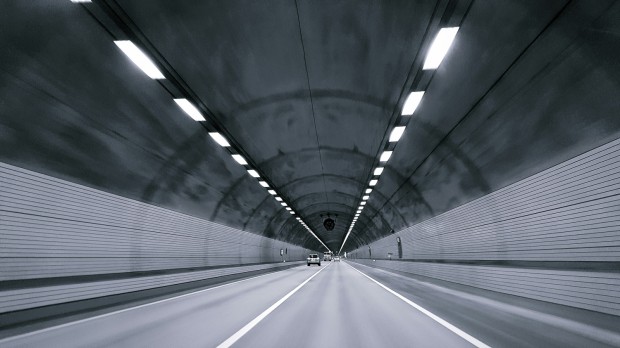Underwater tunnels have been creatively constructed worldwide to enhance transportation connections in different locations. These exceptional engineering achievements not only enable more efficient traffic movement but also serve as marvels of modern infrastructure.

(Photo : Unsplash/KS KYUNG)
6. Bomlafjord Tunnel (7.8 km)
In Norway, the Bomlafjord Tunnel is a Triangle Link Project component, which includes three other bridges intended to construct a connection between the islands of Stord, Bomlo, and Fittjar. Additionally, the tunnel connects three lanes of the E39 European Road. Although designs for the Bomlafjord Tunnel had existed since the 1980s, construction of the tunnel did not break ground until 1997. Beginning in 2011, the tunnel accommodated up to 3,966 vehicles daily. Accordingly, safety precautions have been incorporated into the tunnel, including the provision of mobile phone service, the installation of barriers and lighting at each entrance, and the installation of turning points for vehicles at 1,500 meters.
5. Eysturoyartunnilin Tunnel (11.2 kilometers)
Eysturoyartunnilin, alternatively referred to as the Eysturoy tunnel, was inaugurated in 2020. Spanning a depth of 6.9 miles (11.2 kilometers), it traverses the North Atlantic Ocean to connect Streymoy and Eysturoy, two islands in the Faroe archipelago.
4. Ryfast Tunnel (14.3 km)
The Solbakk or Ryfylke Tunnel connects Solbakk to Hundvag in Stavanger, while the Hundvag Tunnel links Hundvag to an underground tunneled highway interchange with the E39 Eiganes Tunnel. The Ryfast Tunnel, which is a vital part of the European Route E39 highway, was constructed to promote connectivity between the towns of Strand and Hjelmeland.
Also Read: Unlocking Solutions: 5 Innovative Approach to Address the Housing Crisis
3. Tokyo Bay Aqua-Line (15 km)
The Tokyo Bay Aqua Line is a toll highway that traverses Tokyo Bay in Japan. Because of the lengthy planning and building process, it was not open to the public until December 1997. Before the tunnel's construction, to travel between Kisazaru City and Kawasaki City, one had to take a boat or drive one hundred kilometers along Tokyo Bay.
2. Channel Tunnel (50.49 km)
Connecting Folkestone, England, and Coquelles, France, the Channel Tunnel, also known as the Chunnel, traverses the English Channel at the Straits of Dover and extends 31.35 miles (50.49 kilometers). In 1986, the UK and France built the Channel Tunnel by choosing a rail tunnel over a long bridge or road-rail combination. The Channel Tunnel comprises one service tunnel and two single-track rail tunnels, collectively enabling bidirectional traffic.
1. Seikan Tunnel (53.85 km)
The Seikan conduit, which connects the islands of Honshu and Hokkaido in Japan, is the most extended subsea rail conduit in the world in terms of total length. InFerries were the primary mode of transportation between Honshu and Hokkaido in 1954 when the first one occurred. However, in 1954, when a catastrophic typhoon in the Tsugaru Strait claimed 1,430 lives, engineers devised a safer course of action by connecting the islands via tunnel rather than bridge due to the unpredictability of the weather.
This massive tunnel, completed in 1988, is approximately 790 feet (240 meters) below sea level and spans 33.46 miles (53.85 kilometers). Hokkaido Island's Yoshioka Kaitei and Honshu Island's Tappi Kaitei are the two stations which comprise the tunnel. These stations are the first railway stations to be built underwater and serve as emergency escape routes in the event of a catastrophe.
Related Article: Construction of Long-Awaited Tunnel Linking Roselle Park and Staten Island Set to Begin This Year







